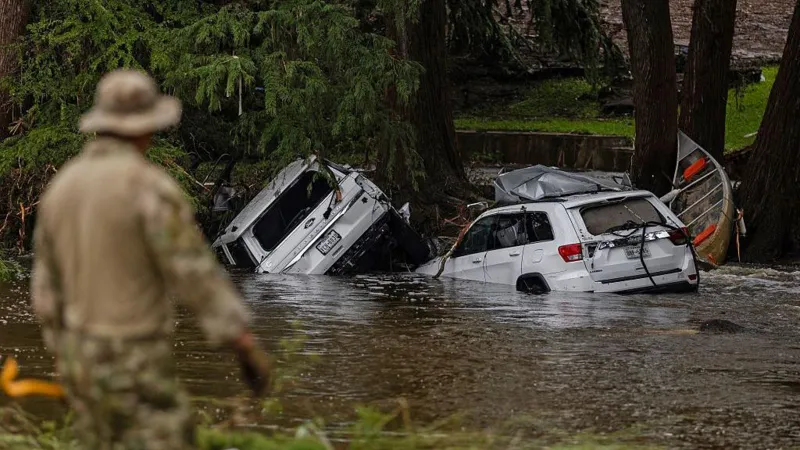Deadly storms over the 4 July holiday ravaged Texas’ Hill Country with several months’ worth of rain in a few hours, leaving behind mangled trees, swaths of deep mud and heartbreak over hundreds lost or missing.
They also renewed focus on the US government’s ability to warn and protect residents from weather catastrophes.
The intense rainfall and flash floods are the deadliest weather disaster in the US since President Donald Trump’s administration conducted mass staff cuts at two key weather and climate agencies: the National Oceanic and Atmospheric Organisation (NOAA) and its subsidiary, the National Weather Service (NWS).
While experts say the National Weather Service issued alerts in a timely manner over the weekend, the deadly incident carries warnings about what could happen if the NWS and NOAA are not properly staffed and funded in the future.
“The Weather Service did a good job with the information you had here. I don’t think the staffing cuts contributed to this,” said Andy Hazelton, a climate scientist who was laid off from NOAA where he modelled hurricane paths.
“But this is the kind of event we can see more of if the cuts to NOAA continue, if you make the models worse or have the staffing levels lower.”
The agency already has taken a significant hit.
Since February, the weather service has lost about 600 staff through a combination of firings, early retirements, and deferred resignations, said Tom Fahy, legislative director of the National Weather Service Employees Organisation.
Those cuts struck every corner of the agency, said Mr Fahy, from meteorologists to technical specialists to hydrologists, who specialise in flooding.
“We lost a full spectrum of the employees and the brainpower for the National Weather Services,” he said.
Several offices nationally are operating far below traditional staffing levels for meteorologists, Mr Fahy told the BBC.
Typically, an NWS office has at least 13 such scientists on their staff, he said. Yet offices in Goodland, Kansas and Hanford, California each have a 61.5% vacancy rate for meteorologists, according to the NWSEO union data. The office in Amarillo, Texas, has a 30.77% vacancy rate for meteorologists, and Rapid City, South Dakota was at 46.15%.
“Staffing has to be increased, we have to do this across the country, we need more individuals to do this,” Mr Fahy said. “You can’t run a weather forecast office on a bare bones operation. Too many things are at stake, too many lives at are at stake.”
The San Antonio office, which played a leading role in forecasting last week’s deadly rainstorms, has about an 18% vacancy rate, according to a tally of open roles on its website.
But it had “additional forecasters on duty during the catastrophic flooding event”, NWS spokeswoman Erica Grow Cei said in a statement.
Limited staffing would not immediately spell disaster anyhow, according to a volunteer who works with the San Antonio weather office to disseminate alerts in his community.
- ‘Hero’ dad, twin girls and riverside campers among Texas flood victims
- Did US government cuts contribute to the Texas tragedy?
“They’re used to doing a lot with so little already,” said the volunteer, who asked for anonymity because he feared retaliation.
“But I do think that they might not be publicly saying anything, they would probably love to have those people back.”
The volunteer pointed to one notable exit: Paul Yura, a warning coordination meteorologist who took the Trump administration’s early retirement offer in April, according to local media.
The role is a vital weather service and community liaison, coordinating with local emergency responders and volunteers to help prepare for severe weather.
“He was our mentor, he was our guy we would talk to,” the volunteer said, explaining that without Mr Yura, volunteers did not have a point person during emergencies like the 4 July floods.
In June, the Trump administration said it would allow the NWS to hire more than 100 new positions despite the federal hiring freeze.
More cuts are potentially on the way, however.
NOAA has proposed cutting its budget by about $1.8bn for the 2026 fiscal year, according to a report it submitted to US Congress, and planned to reduce staff by about 17%, according to Fed News.


